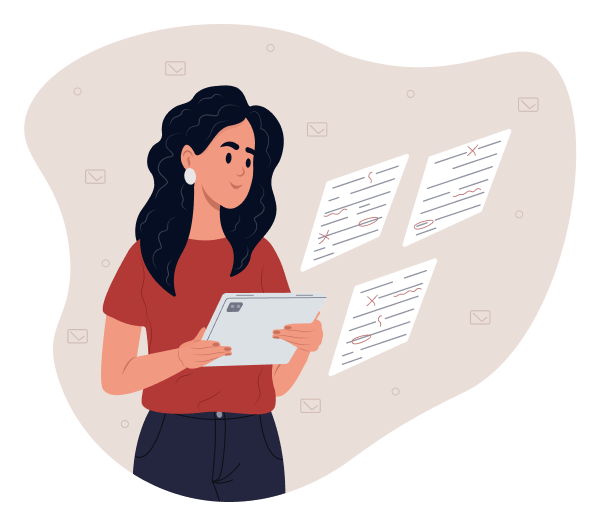Create an Accessible Website With Adaptive Technology for the Disabled
Maximize your reach by integrating adaptive technology for the disabled into your website. We enable businesses, service providers, and educators to deliver on their mission of inclusivity by helping them ensure online platforms are ADA and WCAG compliant. Web Accessible has comprehensive solutions that make the internet more open to all.

Keeping Up With Adaptive Technology for People With Disabilities
How can developers and business owners be sure that their sites comply with ADA or WCAG standards? Adaptive technology for disabilities is constantly evolving, making compliance a moving target. Keeping up with the changes and incorporating more advanced features will provide a win-win for businesses and their audience.
Captions:
Text generation provides text for audio content to assist deaf or hard-of-hearing users.
Screen Reader Capabilities:
Assistive software can read text aloud to the visually impaired.
Keyboard Navigation Tools:
Embedded tools allow easier site navigation without a mouse.
High Contrast and Color Adjustment Options:
People with visual impairments can benefit from high contrasts in page designs and color adjustment options.
Resizable Text:
Allows users to adjust font size without breaking site functionality.
Voice Recognition and Control:
Enables users to navigate and interact with a site using voice commands.
Skip Navigation Links:
Allows keyboard users to jump directly to the main content, bypassing repetitive menus.
Accessible Chatbots and Virtual Assistants:
Text-based or voice-enabled support.
Braille Display Compatibility:
Ensures text content can be translated into refreshable braille displays.
There are many forms of adaptive technology for the disabled that can enhance their online experience. Frequent verification that they are working and updating them can be an expensive and time-consuming process. Our advanced scanners review these features across your website and deliver simple reports outlining what’s broken or outdated.
Adaptive Technology for Students With Disabilities
Whether you’re a public or private educational institution, adaptive technology for students with disabilities can enhance your offerings to pupils while ensuring safety from legal repercussions. The types of tools and platforms that can be used offer powerful learning aids to anyone who would otherwise be left behind in a web-based curriculum.
Some examples of adaptive technology for students with disabilities include:
Error Identification and Input Suggestions: Supports students with cognitive issues by offering clear error messages and guidance.
Accessible Digital Documents and PDFs: Ensures study materials are formatted for screen readers and similar devices.
Math and STEM Tools: Platforms like MathML and Desmos offer screen reader-friendly math notation for pupils.
Is Web Accessibility Required by Law?
The added demands of incorporating adaptive technology for the disabled and ensuring they stay working shouldn’t be considered a burden. Companies invest in marketing initiatives to reach a wider audience, and providing an inclusive experience for everyone complements that goal. There are also legal requirements for specific industries.
Examples of industries legally required to maintain access to adaptive technology for disabled people are government contractors and public education institutions receiving federal funding. Additionally, any website considered open to the public may face litigation under the ADA if it fails to meet standards.
An e-commerce site could face penalties for noncompliance because courts are increasingly ruling that online platforms function as public spaces. If they do not include adaptive technology for the disabled, such as screen reader compatibility, or do not have proper alt text, they may be liable against complaints by people with visual impairments.
A healthcare website that requires users to fill out online forms but lacks keyboard navigation support, clear labels, or error identification could violate ADA requirements. If a person with a motor disability cannot complete an essential form (such as applying for benefits or scheduling a medical appointment) due to inaccessible design, the website owner may face legal action for discrimination.
Overcoming these risks is simple with our expert services. A professional audit will ensure all standards are met, including Section 508 for government contractors.

Fast Solutions for Developers and Executives
Most companies could benefit from enhanced processes that boost efficiency and effectiveness. Our services are a resource that can speed up the verification of website integration with adaptive technology for the disabled. An audit from us will quickly scan all pages to gauge compatibility with accessibility guidelines.
A detailed report will also include measures to implement for improvement, including recommendations for fixing missing alt text, improving keyboard navigation, enhancing screen reader compatibility, ensuring proper color contrast, and optimizing form accessibility. We offer suggestions for tools and processes to create a better UX for everyone.
Proactively Address Future Issues
Anticipate evolving needs with design principles prioritizing flexible and scalable solutions. Go beyond the bottom limits of compliance standards and ensure openness even as adaptive technology for people with disabilities changes. Websites can maintain compatibility as these systems evolve by using semantic HTML, ARIA landmarks, and structured data.
AI-driven voice navigation, gesture-based controls, and predictive text tools can further improve accessibility for users with mobility or cognitive impairments. A mobile-first approach also ensures that sites are optimized for smartphones, tablets, and emerging devices, which increasingly come with built-in accessibility features. Future-proofing a website today means making it adaptable to innovations that enhance the experience for disabled individuals.
Beyond structural design, automation and AI-driven enhancements can continuously improve accessibility. Features like real-time captioning, AI-generated transcripts, and speech-to-text functionality can evolve to meet the needs of users who are deaf, hard of hearing, or have speech impairments. Our audits can detect and resolve compliance issues before they become barriers, helping you stay ahead of legal requirements and public expectations.

Our Mission Complements Your Business Goals
Our mission complements your goals of reaching a wider audience. Allowing more people to participate in online spaces is mutually beneficial to everyone. Developers and business leaders need the tools and resources to create user-friendly websites and adhere to evolving standards. We offer flexible services to accommodate all budgets and needs, including scanning for level A, AA, or AAA issues, domain tracking, and the ability to monitor thousands of URLs. Check our pricing and contact Web Accessible for better integration with adaptive technology for disabilities.
